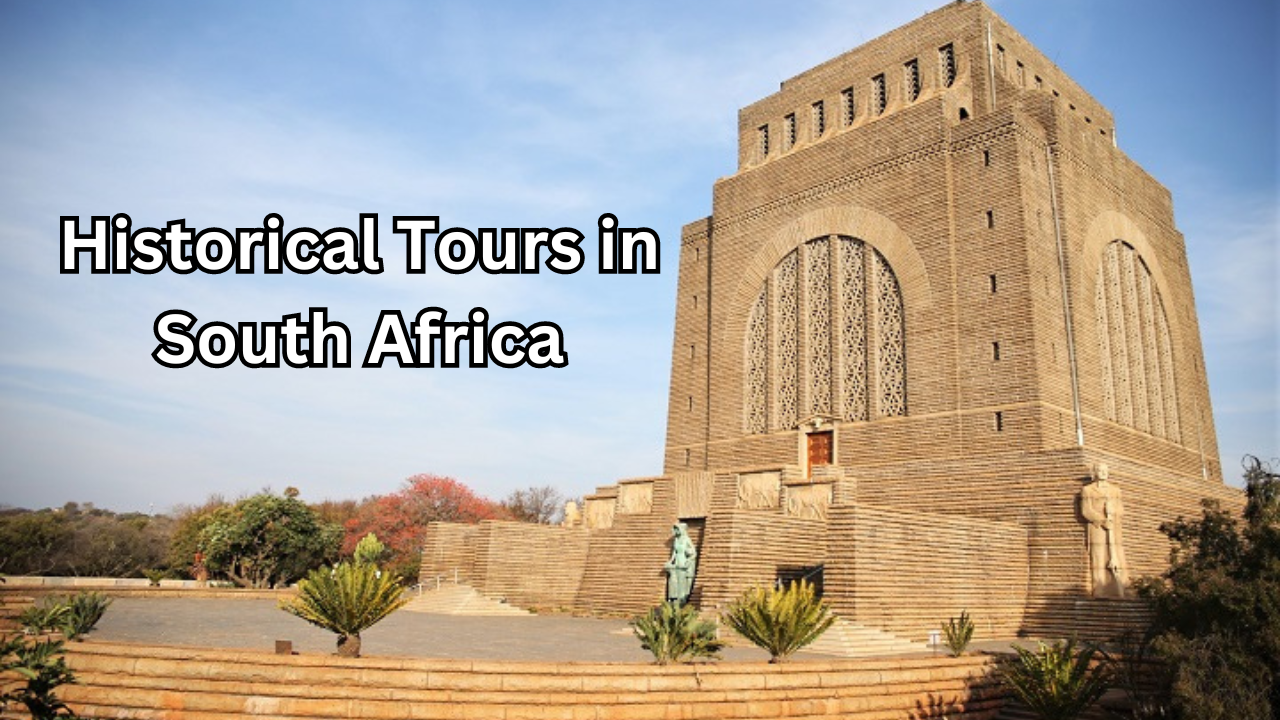Table of Contents
Introduction
Historical tours in South Africa rich and tumultuous history is etched into its landscapes, museums, and cultural sites, offering visitors a profound journey through time. From ancient fossil sites that unravel the mysteries of human evolution to poignant reminders of the struggle against apartheid, the country’s historical tours provide a compelling narrative of resilience, cultural diversity, and the quest for freedom. These tours not only illuminate South Africa’s past but also underscore its ongoing journey towards reconciliation and unity in a post-apartheid era. In exploring these sites, visitors gain not only historical insights but also a deeper understanding of the complex social fabric that defines modern South Africa. Join us as we delve into some of the most captivating historical tours that showcase the heart and soul of this remarkable nation.
Brief Overview of South Africa’s Diverse History and Cultural Heritage
South Africa’s history is a tapestry woven from a myriad of cultures, traditions, and pivotal events that have shaped its identity over millennia. Archaeological evidence suggests human habitation dating back over 100,000 years, with ancient rock art and archaeological sites scattered across the landscape bearing witness to early civilizations.
In more recent centuries, South Africa became a focal point of European exploration and colonization, with Dutch and British settlers leaving a lasting impact on the country’s cultural and political landscape. The arrival of European settlers brought about significant societal changes, including the displacement and marginalization of indigenous communities and the establishment of racially segregated policies that would culminate in the era of apartheid.
Importance of Historical Tours in Understanding the Country’s Past
Historical tours in South Africa play a crucial role in unraveling the complexities of its past and present. These tours provide visitors with firsthand insights into pivotal events, such as the struggle against apartheid, through visits to iconic sites like Robben Island, where Nelson Mandela and other anti-apartheid activists were imprisoned. They also offer opportunities to explore heritage sites like the Cradle of Humankind, revealing ancient fossils that trace the origins of humanity in Africa.
By engaging with South Africa’s historical tours, visitors gain a deeper understanding of the country’s diverse cultural heritage, from the traditions of indigenous communities to the contributions of various ethnic groups in shaping its modern identity. These experiences foster cultural empathy and appreciation, promoting dialogue and understanding across different communities and perspectives.
In essence, historical tours in South Africa serve as poignant reminders of resilience, transformation, and the ongoing quest for reconciliation. They invite travelers to not only witness history but to actively participate in preserving and honoring the stories that define South Africa’s collective memory
Robben Island
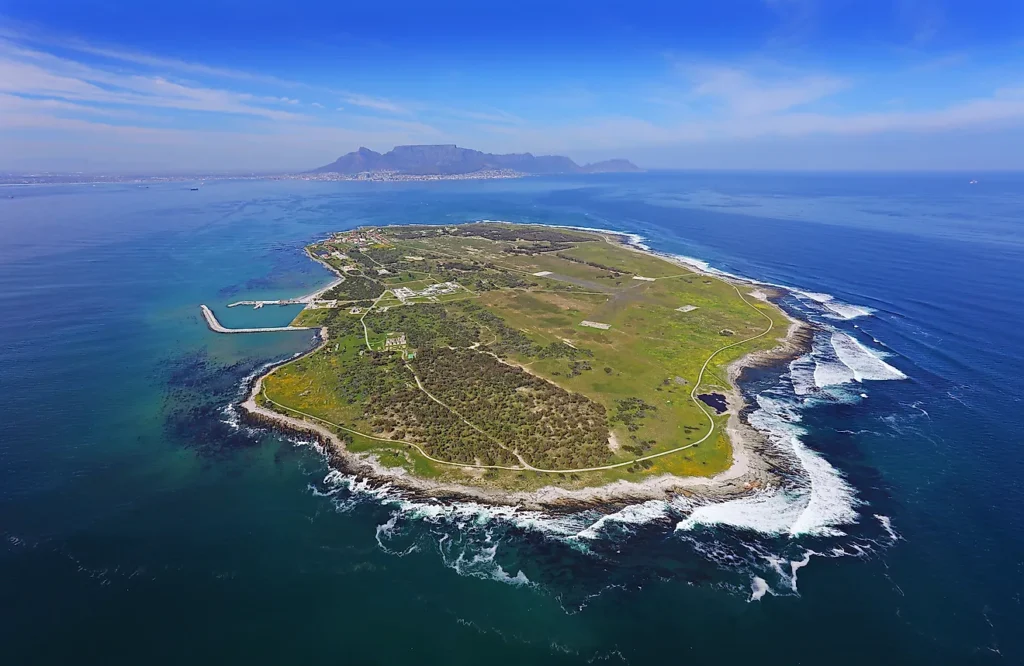
Robben Island, situated off the coast of Cape Town, holds a poignant place in South Africa’s history. Initially used as a place of banishment and isolation, it became infamous during the apartheid era as a maximum-security prison for political prisoners, including Nelson Mandela. Visiting Robben Island offers a sobering insight into the harsh conditions and the resilience of those who fought against racial oppression. Guided tours, often led by former inmates, provide firsthand accounts of life within its walls, offering profound reflections on the struggle for freedom and the triumph of human spirit in the face of adversity. Today, Robben Island stands as a symbol of South Africa’s journey from oppression to democracy, inviting visitors to reflect on the power of forgiveness, reconciliation, and the ongoing pursuit of justice worldwide.
Location and Significance
Robben Island holds a significant place in South Africa’s history, located approximately 7 kilometers off the coast of Cape Town. Originally used as a place of banishment for political prisoners, lepers, and those deemed socially undesirable, its most notorious chapter began during the apartheid era. From 1961 to 1991, Robben Island served as a maximum-security prison where the apartheid government incarcerated prominent political activists, including Nelson Mandela and Walter Sisulu.
Tour Details
Today, Robben Island stands as a poignant symbol of South Africa’s struggle for freedom and democracy. Guided tours, often led by former inmates who share firsthand accounts of their experiences, provide visitors with deep insights into the harsh realities faced by prisoners during apartheid. These tours offer a glimpse into the daily lives, resilience, and sacrifices of those who fought against racial segregation and injustice.
Visitors to Robben Island can explore the prison facilities, including Nelson Mandela’s cell, and witness the stark conditions under which political prisoners were held. The tour also includes visits to the lime quarry, where Mandela and others performed grueling physical labor, and the Robben Island Museum, which documents the island’s history and its role in the anti-apartheid struggle.
Through these experiences, Robben Island not only preserves the memory of those who were incarcerated but also serves as a testament to the human spirit’s enduring quest for justice and equality. It remains a powerful reminder of South Africa’s journey from oppression to reconciliation, inviting reflection on the importance of upholding human rights and fostering a society founded on dignity and respect for all.
Johannesburg:
Johannesburg, often referred to as Jo’burg or Jozi, is South Africa’s largest city and a vibrant hub of culture, history, and economic activity. Founded in the late 19th century following the discovery of gold, Johannesburg grew rapidly into a cosmopolitan metropolis known for its skyscrapers, bustling markets, and diverse population. The city’s history is deeply intertwined with its mining heritage and the influx of migrants from across South Africa and beyond, shaping its dynamic cultural landscape.
Soweto:
South-Western Townships, better known as Soweto, is a sprawling township located southwest of Johannesburg. Initially established in the early 20th century to house black South Africans who were segregated under apartheid laws, Soweto became a hotbed of resistance and political activism during the struggle against apartheid. The township is renowned for its rich cultural heritage, vibrant music scene, and significant historical landmarks.
Apartheid Museum
The Apartheid Museum in Johannesburg stands as a stark reminder of South Africa’s tumultuous history of racial segregation. Opened in 2001, the museum meticulously chronicles the apartheid era, examining its origins, implementation, and eventual dismantling through a series of powerful exhibits, photographs, and artifacts. Visitors journey through the museum, experiencing the systematic discrimination and oppression that defined this dark chapter in South Africa’s history. It serves as both a memorial to the millions who suffered under apartheid and a testament to the resilience and courage of those who fought against it.
Mandela House
In the heart of Soweto, Johannesburg, lies Mandela House, the former residence of Nelson Mandela and his family from 1946 to the early 1960s. Today, this modest brick house serves as a museum dedicated to Mandela’s life and legacy. Visitors can explore the rooms where Mandela lived and worked before his arrest in 1962, gaining insights into his personal journey and the sacrifices made in the struggle against apartheid. Mandela House stands as a symbol of hope and resilience, embodying the spirit of freedom and equality that Mandela tirelessly advocated throughout his life.
Hector Pieterson Memorial
The Hector Pieterson Memorial in Soweto commemorates the Soweto Uprising of June 16, 1976, a pivotal moment in South Africa’s anti-apartheid struggle. Named after 12-year-old Hector Pieterson, who was among the first casualties of the uprising, the memorial pays tribute to the hundreds of students who marched against the imposition of Afrikaans as the language of instruction in schools. The tragic events of that day sparked nationwide protests and marked a turning point in the fight against apartheid. The memorial includes a museum that documents the events leading up to the uprising and honors the courage and sacrifice of those who stood up against injustice.
Together, the Apartheid Museum, Mandela House, and Hector Pieterson Memorial offer profound insights into South Africa’s complex history, highlighting both the devastating impact of apartheid and the resilience of its people in the pursuit of freedom, justice, and equality. These sites are essential landmarks for understanding the country’s journey from oppression to democracy and serve as poignant reminders of the ongoing struggle for social justice worldwide
Cradle of Humankind
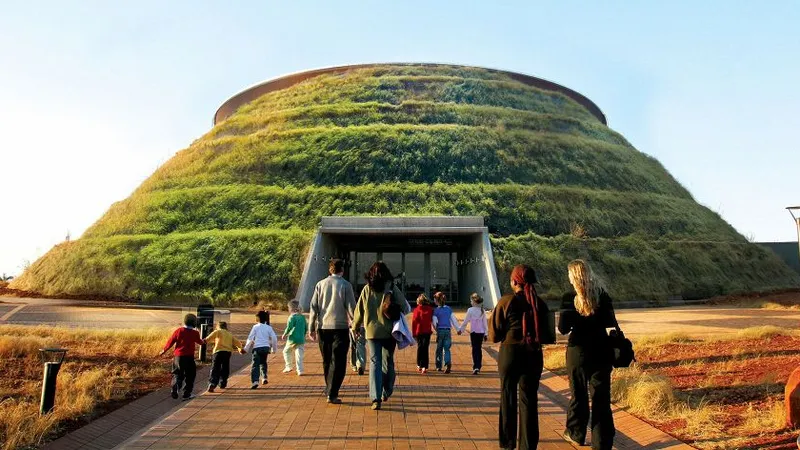
The Cradle of Humankind, located just northwest of Johannesburg, South Africa, is a UNESCO World Heritage site celebrated for its profound archaeological significance and contribution to understanding human evolution. Spanning approximately 47,000 hectares, this expansive area is home to numerous limestone caves that have yielded some of the world’s most important fossil finds.
UNESCO World Heritage Site near Johannesburg
The Cradle of Humankind, located just northwest of Johannesburg, South Africa, is a UNESCO World Heritage site renowned for its rich fossil-bearing caves and significant contributions to our understanding of human evolution. This expansive area spans approximately 47,000 hectares and is home to over a dozen fossil sites that have yielded some of the world’s oldest and most significant hominid fossils.
Fossil Sites
The Cradle of Humankind boasts a wealth of archaeological and paleoanthropological treasures dating back millions of years. Excavations in caves such as Sterkfontein, Swartkrans, and Kromdraai have unearthed fossilized remains of ancient hominids, including Australopithecus africanus and Paranthropus robustus, shedding light on the evolutionary processes that led to the emergence of modern humans. These discoveries have been pivotal in shaping our understanding of human origins and the development of early societies in Africa.
Visitors to the Cradle of Humankind can explore the visitor centers and guided tours that offer insights into ongoing research and the significance of each fossil site. The area not only serves as a scientific marvel but also as a testament to Africa’s pivotal role in the story of human evolution. It invites visitors to contemplate our shared ancestry and the connections that bind us to the natural world, making it a must-visit destination for anyone interested in archaeology, anthropology, and the origins of humanity.
Battlefields of KwaZulu-Natal
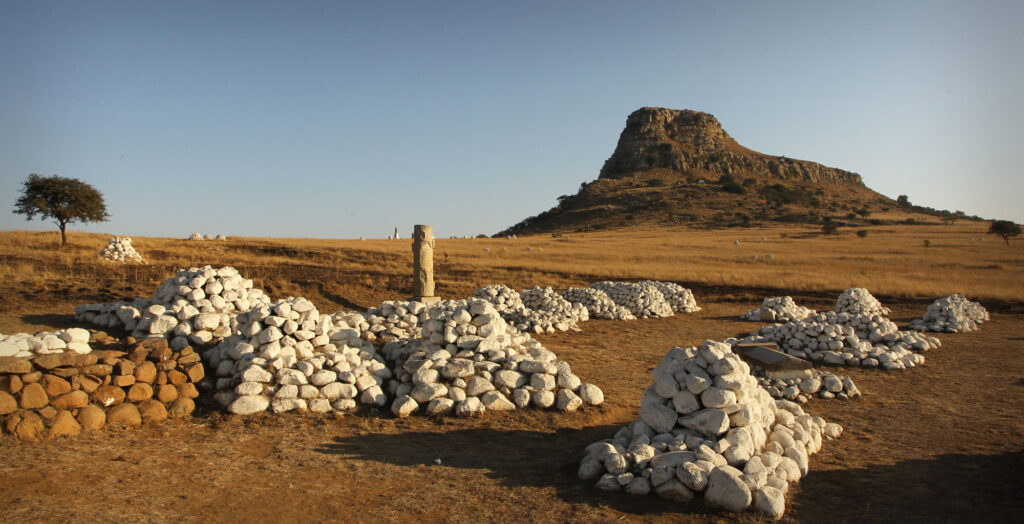
The Battlefields of KwaZulu-Natal in South Africa are hallowed grounds that bear witness to significant historical conflicts between the British Empire and various indigenous peoples, most notably the Zulu Kingdom. These battlefields, scattered across the picturesque landscape of KwaZulu-Natal province, serve as poignant reminders of the region’s turbulent past and the clash of cultures that shaped South Africa’s history.
Isandlwana
Isandlwana is a historic battlefield located in KwaZulu-Natal, South Africa, renowned for its significance in the Anglo-Zulu War of 1879. It was here that the Zulu Kingdom achieved a stunning victory over British forces on January 22, 1879. The battle unfolded as part of the British invasion of Zululand, with over 20,000 Zulu warriors employing innovative tactics and overwhelming the British and colonial troops stationed at the base of the Isandlwana Hill. The defeat was a severe blow to the British Empire and remains one of the most notable victories for African forces against European colonial powers. Today, Isandlwana stands as a solemn memorial to the bravery and military prowess of the Zulu warriors, offering visitors a poignant insight into the complexities of colonial warfare and the resilience of indigenous peoples.
Rorke’s Drift
Just hours after the British defeat at Isandlwana, another historic battle unfolded at Rorke’s Drift, a mission station located nearby. Here, a small garrison of approximately 150 British and colonial troops, under the command of Lieutenant John Chard and Lieutenant Gonville Bromhead, faced a determined assault by thousands of Zulu warriors. Despite being vastly outnumbered, the defenders successfully repelled wave after wave of attacks over the course of several hours. Their tenacity and courage in defending the makeshift fortifications at Rorke’s Drift earned them widespread acclaim and resulted in the awarding of 11 Victoria Crosses, the highest military honor in the British Empire, for their gallantry.
Today, Rorke’s Drift is preserved as a heritage site and museum, offering visitors the opportunity to explore the battlefield, view period artifacts, and learn about the heroic stand of the defenders against overwhelming odds. The site serves as a testament to the bravery of both the British soldiers and the Zulu warriors, highlighting the complexities and human cost of colonial conflicts in South Africa’s tumultuous history.
District Six Museum (Cape Town)
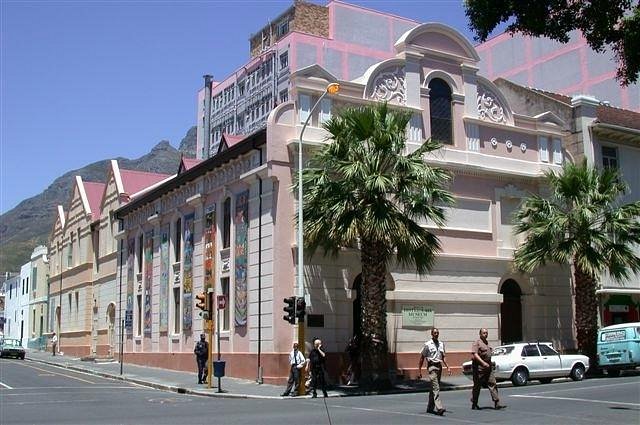
The District Six Museum in Cape Town stands as a poignant memorial to a once-vibrant community forcibly displaced during the apartheid era in South Africa. District Six was a culturally diverse neighborhood where people of various racial and ethnic backgrounds lived side by side, creating a vibrant and close-knit community. However, in the 1960s, the apartheid government designated District Six as a “whites-only” area under the Group Areas Act, leading to the forced removals of over 60,000 residents.
Forced Removals during Apartheid
During apartheid in South Africa, forced removals were a devastating consequence of the government’s racial segregation policies. These policies, implemented under the Group Areas Act of 1950, forcibly relocated non-white communities from areas designated for white occupation. District Six in Cape Town became emblematic of this policy, where over 60,000 residents of diverse racial and cultural backgrounds were uprooted from their homes and dispersed to impoverished outskirts, severing social ties and disrupting livelihoods. Forced removals were not merely about physical displacement but also aimed to undermine cultural identity and community cohesion, perpetuating systemic discrimination and inequality.
Preservation of Cultural Heritage and Community History
The preservation of cultural heritage and community history has been crucial in the aftermath of apartheid’s forced removals. Institutions like the District Six Museum in Cape Town serve as custodians of memory, documenting the rich cultural tapestry and resilience of communities that once thrived in areas targeted for removal. Through exhibitions, oral histories, and educational programs, these museums and initiatives commemorate lost neighborhoods, amplify marginalized voices, and foster dialogue about the enduring impact of apartheid policies. By preserving cultural heritage, communities reclaim their histories, honor ancestors, and advocate for social justice, contributing to reconciliation efforts and the ongoing pursuit of a more inclusive society in post-apartheid South Africa
Voortrekker Monument (Pretoria)
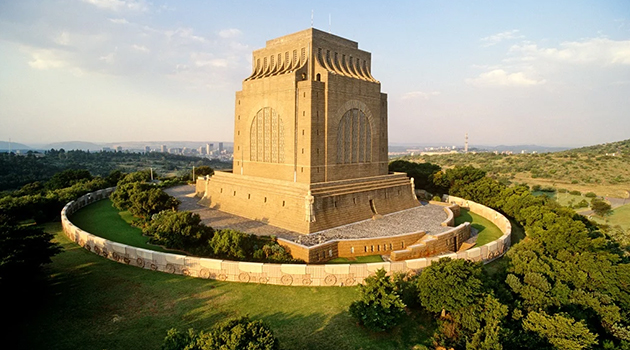
The Voortrekker Monument, situated in Pretoria, South Africa, stands as a prominent symbol of Afrikaner history and culture. Built between 1937 and 1949, the monument commemorates the Great Trek of the 1830s and 1840s, during which Boer pioneers (Voortrekkers) migrated inland from the Cape Colony to escape British colonial rule. This migration marked a significant chapter in Afrikaner history, shaping their identity and influencing subsequent events in South Africa’s history.
Commemorating Afrikaner Pioneers (1830s-1840s)
The Great Trek was a pivotal event in Afrikaner history, driven by discontent with British colonial rule and a desire to establish independent Boer republics. Voortrekkers embarked on arduous journeys into the interior of Southern Africa, facing challenges such as hostile encounters with indigenous communities, harsh terrain, and disease. The Voortrekker Monument honors the bravery, resilience, and sacrifices of these pioneers, many of whom lost their lives during the trek or subsequent conflicts with indigenous peoples.
Cultural and Historical Significance in Afrikaner History
The Voortrekker Monument holds profound cultural and historical significance for Afrikaners, symbolizing their struggle for self-determination and preservation of cultural heritage. Designed in Monumentalism style by architect Gerard Moerdijk, the monument’s architecture reflects the grandeur and endurance associated with the Voortrekkers’ quest for independence. Inside the monument, a central cenotaph pays tribute to those who died during the Great Trek and subsequent battles, emphasizing themes of sacrifice and national unity.
Beyond its architectural and symbolic value, the Voortrekker Monument serves as an educational center, housing a museum that explores the history, customs, and traditions of the Voortrekkers. Exhibitions within the museum depict the challenges faced by the pioneers, their interactions with indigenous peoples, and their role in shaping South Africa’s political landscape.
While the monument is revered by Afrikaners for its celebration of their heritage, it has also sparked debates regarding its portrayal of history and its impact on South Africa’s diverse society. Critics argue that the monument glorifies colonial expansion and overlooks the perspectives and experiences of indigenous populations affected by the Voortrekkers’ migration.
In recent years, efforts have been made to contextualize the monument within a broader historical narrative that acknowledges the complexities of South Africa’s past. This includes initiatives to promote dialogue, reconciliation, and mutual understanding among all South Africans, recognizing the importance of inclusive commemoration in the country’s ongoing journey towards social cohesion and justice
Lesedi Cultural Village (Gauteng)
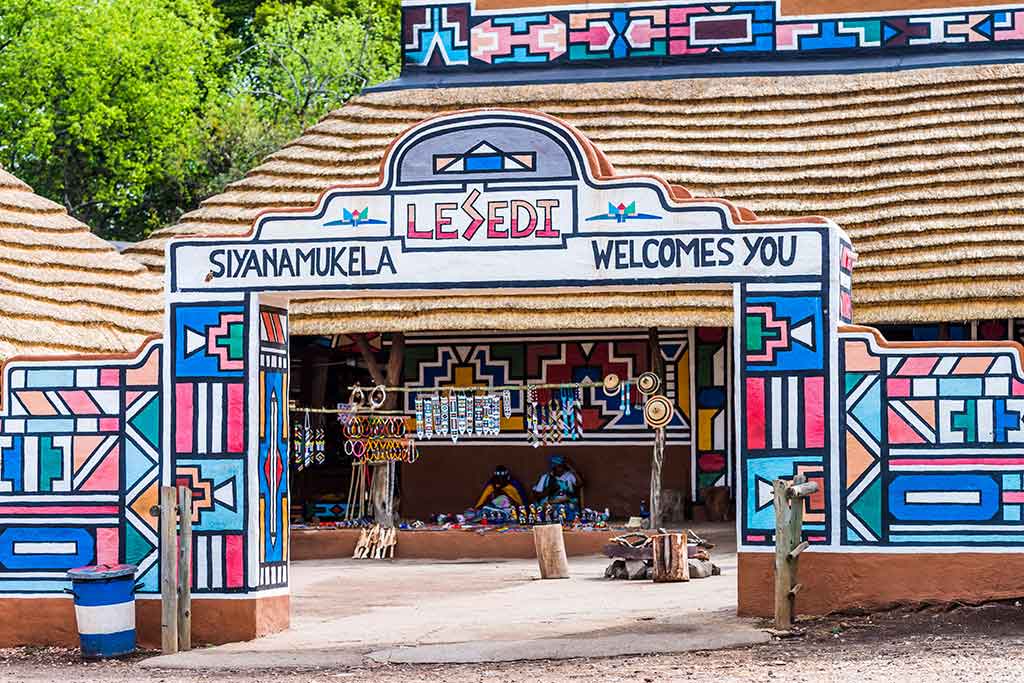
Located in the province of Gauteng, South Africa, the Lesedi Cultural Village offers a captivating journey into the diverse cultural tapestry of the country’s indigenous peoples. Established as a living museum, Lesedi Cultural Village celebrates the traditions, rituals, and customs of several ethnic groups, including the Zulu, Xhosa, Pedi, Basotho, and Ndebele.
Showcase of South Africa’s Diverse Ethnic Groups at Lesedi Cultural Village
Lesedi Cultural Village, nestled in Gauteng province, South Africa, stands as a vibrant showcase of the country’s rich tapestry of ethnic diversity. This living museum offers an immersive experience where visitors can explore and appreciate the traditions, lifestyles, and cultural practices of several prominent South African ethnic groups.
Traditional Music, Dance, Crafts, and Cuisine
At Lesedi Cultural Village, visitors are treated to a sensory feast of traditional music, dance, crafts, and cuisine, each reflecting the unique heritage of the represented ethnic groups:
- Music and Dance: Traditional performances are a highlight, featuring rhythmic beats of drums, melodic tunes of marimbas, and lively dances that convey stories of history, spirituality, and community. Visitors can witness the energetic footwork of Zulu dancers, the graceful movements of Xhosa dancers, the rhythmic stomping of Basotho dancers, and more, each performance adorned with colorful attire and intricate beadwork.
- Crafts: Artisans demonstrate traditional craft-making techniques, showcasing skills passed down through generations. Visitors can observe the meticulous beadwork of the Ndebele people, the intricate pottery of the Pedi, and the weaving traditions of the Basotho, gaining insights into the artistic expressions and cultural significance embedded in each creation.
- Cuisine: Culinary delights await at Lesedi Cultural Village, where traditional dishes from various ethnic groups tantalize the taste buds. Visitors can savor hearty stews like umngqusho (samp and beans) from the Xhosa and Zulu communities, flavorful pap (maize porridge) paired with chakalaka (spicy relish) favored by many South Africans, and sweet treats like koeksisters (deep-fried dough soaked in syrup) enjoyed across different cultural contexts.
Cultural Exchange and Understanding
Beyond the visual and culinary experiences, Lesedi Cultural Village promotes cultural exchange and mutual understanding. Visitors engage with knowledgeable guides from the represented communities, learning about the customs, beliefs, and daily life of each group. This immersive approach fosters respect for cultural diversity and encourages dialogue about the importance of preserving and celebrating South Africa’s rich cultural heritage.
Conclusion
Lesedi Cultural Village serves as a dynamic platform for celebrating South Africa’s diverse ethnic groups, offering a gateway to the country’s cultural mosaic through traditional music, dance, crafts, and cuisine. It embodies the spirit of unity amidst diversity, inviting visitors to embrace and appreciate the unique contributions of each community to the nation’s cultural fabric
Liliesleaf Farm (Johannesburg)
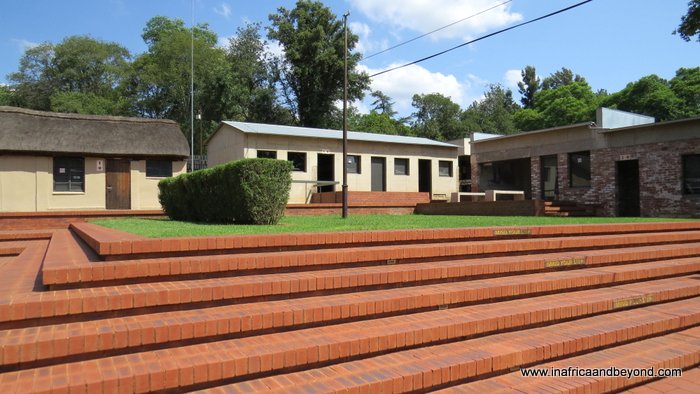
Liliesleaf Farm, located in Rivonia, Johannesburg, holds significant historical importance as a clandestine meeting place and refuge for anti-apartheid activists during the 1960s. Initially a farmstead on the outskirts of Johannesburg, Liliesleaf became a crucial hub for the African National Congress (ANC) leadership and other liberation movements seeking to strategize against apartheid
Liliesleaf Farm: Role in the Anti-Apartheid Struggle
Liliesleaf Farm in Johannesburg played a pivotal role in the anti-apartheid struggle as a clandestine hiding place and secret meeting site for leaders of the African National Congress (ANC) and other liberation movements during the 1960s. Initially a quiet farmstead on the outskirts of Johannesburg, Liliesleaf became a crucial hub where discussions on political strategy, activism, and resistance against apartheid were held away from the watchful eyes of the oppressive regime.
Significance in South Africa’s Liberation History
The farm gained historical significance following a police raid in July 1963, which led to the arrest of key anti-apartheid leaders, including Nelson Mandela and Walter Sisulu. Documents seized during the raid provided crucial evidence in the Rivonia Trial, a landmark legal proceeding that exposed the brutality of apartheid and galvanized international opposition to racial segregation. The trial resulted in life sentences for Mandela and others, cementing Liliesleaf Farm’s place in South Africa’s liberation history as a catalyst for global awareness and solidarity.
Today, Liliesleaf Farm operates as a museum and heritage site, preserving the memory of the Rivonia Trial and the sacrifices made by those who fought for freedom and equality. Guided tours offer visitors a glimpse into the farm’s clandestine past, showcasing restored buildings, exhibits, and artifacts that highlight the courage and determination of anti-apartheid activists. The farm’s legacy continues to inspire ongoing efforts to uphold democratic values, human rights, and social justice in South Africa and around the world.
Liliesleaf Farm stands as a poignant reminder of the resilience of those who risked everything in the struggle against apartheid, illustrating the power of unity, courage, and collective action in the pursuit of a more just and inclusive society
Conclusion
In conclusion, Liliesleaf Farm in Johannesburg stands as a powerful testament to the courage and resilience of those who fought against apartheid in South Africa. As a clandestine meeting place and hiding site for anti-apartheid leaders, Liliesleaf played a pivotal role in shaping the course of history. The farm’s significance was underscored by the pivotal events of the Rivonia Trial, where the bravery and sacrifice of its occupants were showcased on a global stage.
Today, Liliesleaf Farm serves not only as a museum but also as a place of remembrance and education. It honors the memory of those who risked their lives for justice and equality, offering visitors a profound insight into the struggle against oppression. Through its exhibits, guided tours, and educational programs, Liliesleaf continues to inspire a commitment to democratic values, human rights, and reconciliation.
As South Africa continues its journey towards healing and unity, Liliesleaf Farm stands as a beacon of hope and a reminder of the enduring quest for freedom. It invites us to reflect on the past, learn from its lessons, and strive towards a future where dignity and equality prevail for all.
Reflection on the Importance of Historical Tours in South Africa
Historical tours in South Africa play a crucial role in fostering a deeper understanding of the country’s complex and diverse history, spanning from ancient times to recent struggles for freedom and reconciliation. These tours provide invaluable insights into the cultural, social, and political dynamics that have shaped South Africa’s identity and trajectory.
Understanding the Country’s Complex History
South Africa’s history is marked by a rich tapestry of indigenous cultures, colonial encounters, and resistance movements. Historical tours offer a journey through time, allowing visitors to explore archaeological sites such as the Cradle of Humankind, where ancient hominid fossils reveal humanity’s origins. They also shed light on the impact of European colonization, the devastating effects of apartheid, and the heroic efforts of individuals and communities to achieve justice and equality.
From Ancient Times to Recent Struggles for Freedom and Reconciliation
Through guided tours of significant sites like Robben Island, where Nelson Mandela and others were imprisoned during the struggle against apartheid, visitors can grasp the personal sacrifices and collective resilience that defined this era. Sites such as the Apartheid Museum in Johannesburg and the District Six Museum in Cape Town provide immersive experiences that chronicle the profound social injustices and the ongoing quest for reconciliation in post-apartheid South Africa.
Promoting Dialogue and Healing
Historical tours not only educate but also facilitate dialogue among visitors, locals, and descendants of historical events. They encourage reflection on the complexities of South Africa’s past and present, promoting empathy, understanding, and a shared commitment to justice. By preserving and interpreting historical narratives, these tours contribute to the healing process and the construction of a more inclusive national identity.
In conclusion, historical tours in South Africa serve as powerful tools for education, commemoration, and reconciliation. They empower individuals to confront difficult truths, celebrate cultural resilience, and envision a future built on the principles of equality and social justice. Embracing the diverse narratives that define South Africa’s history ensures that lessons from the past inform a more just and equitable society for generations to come.
